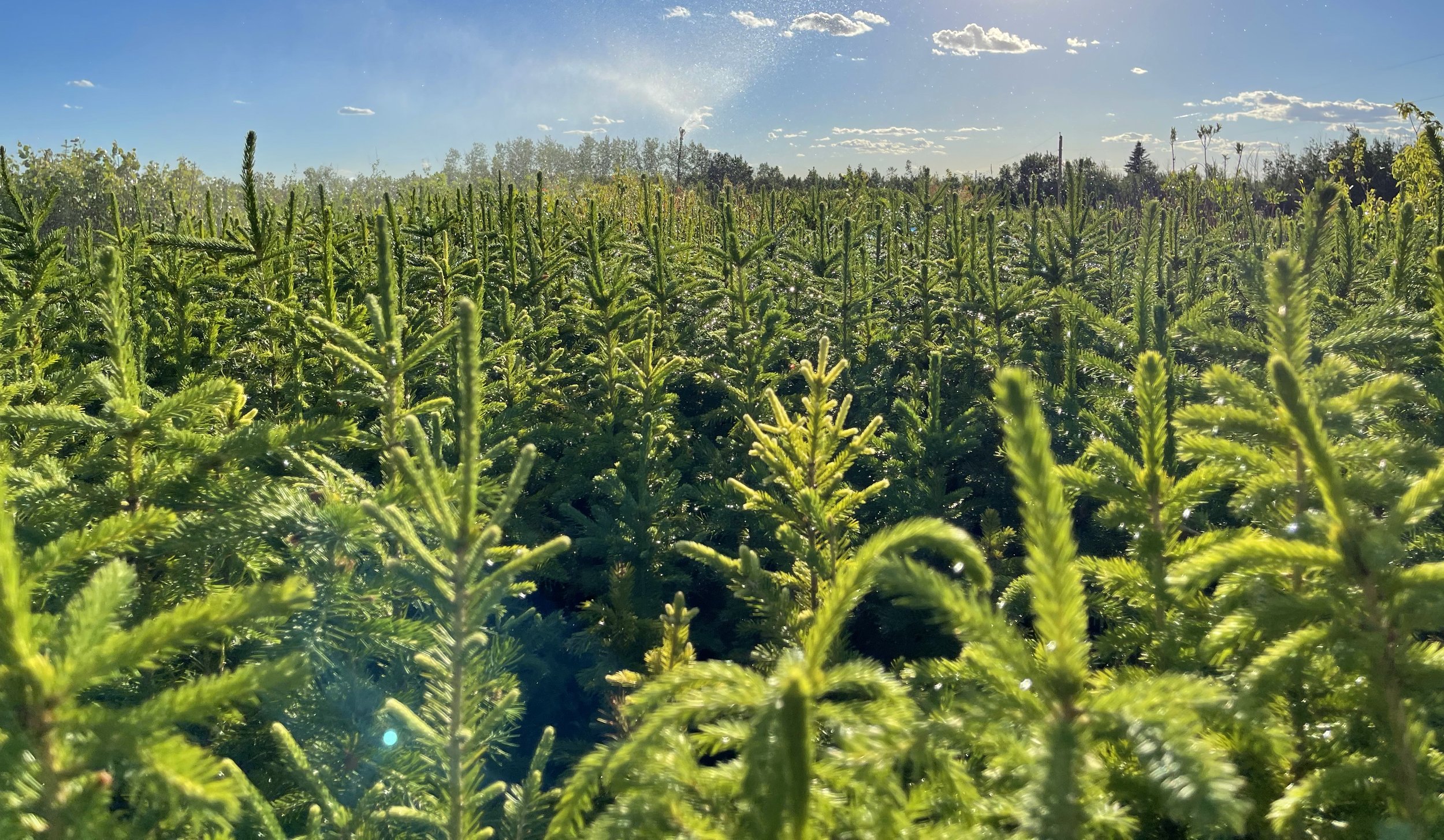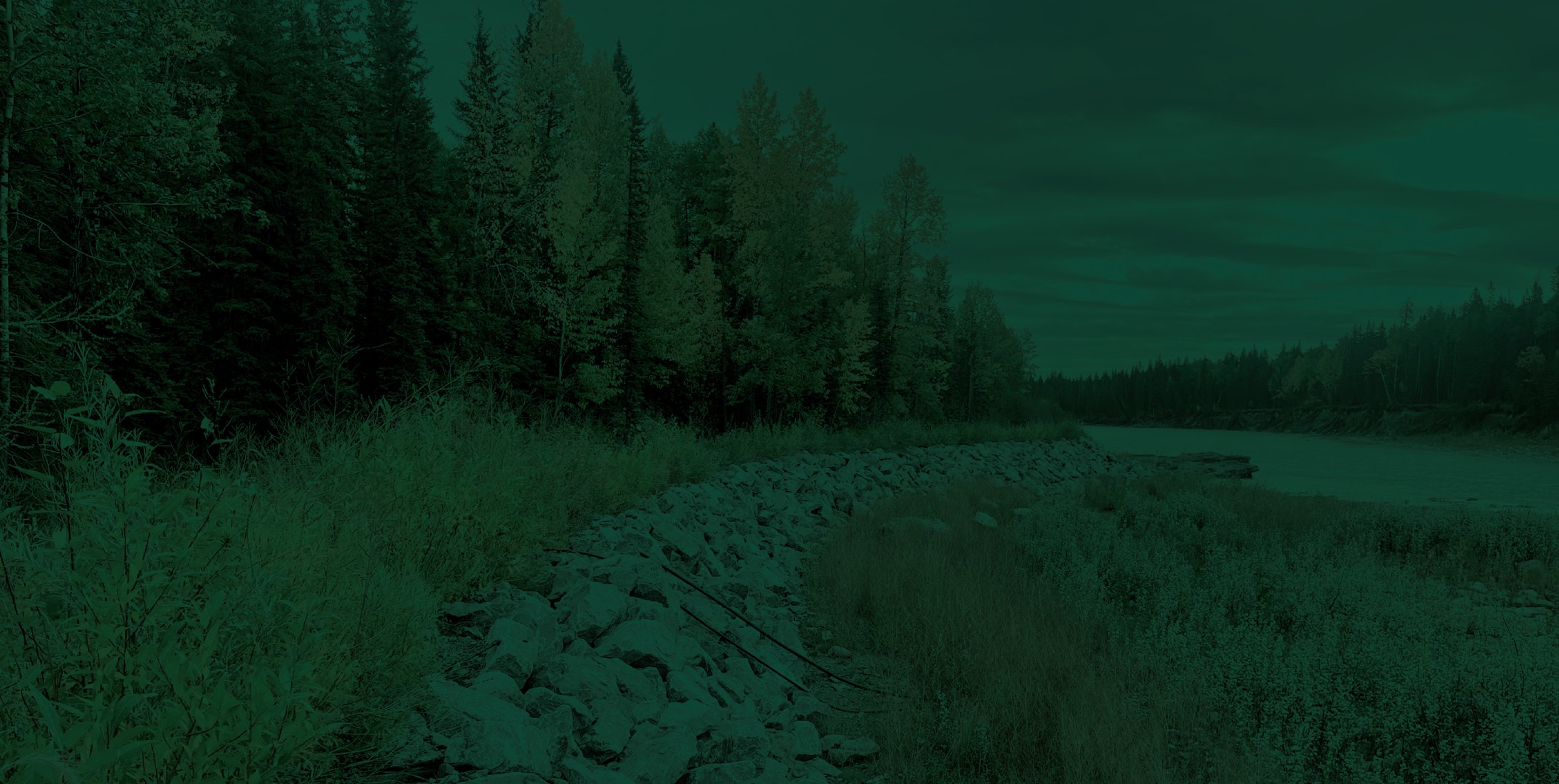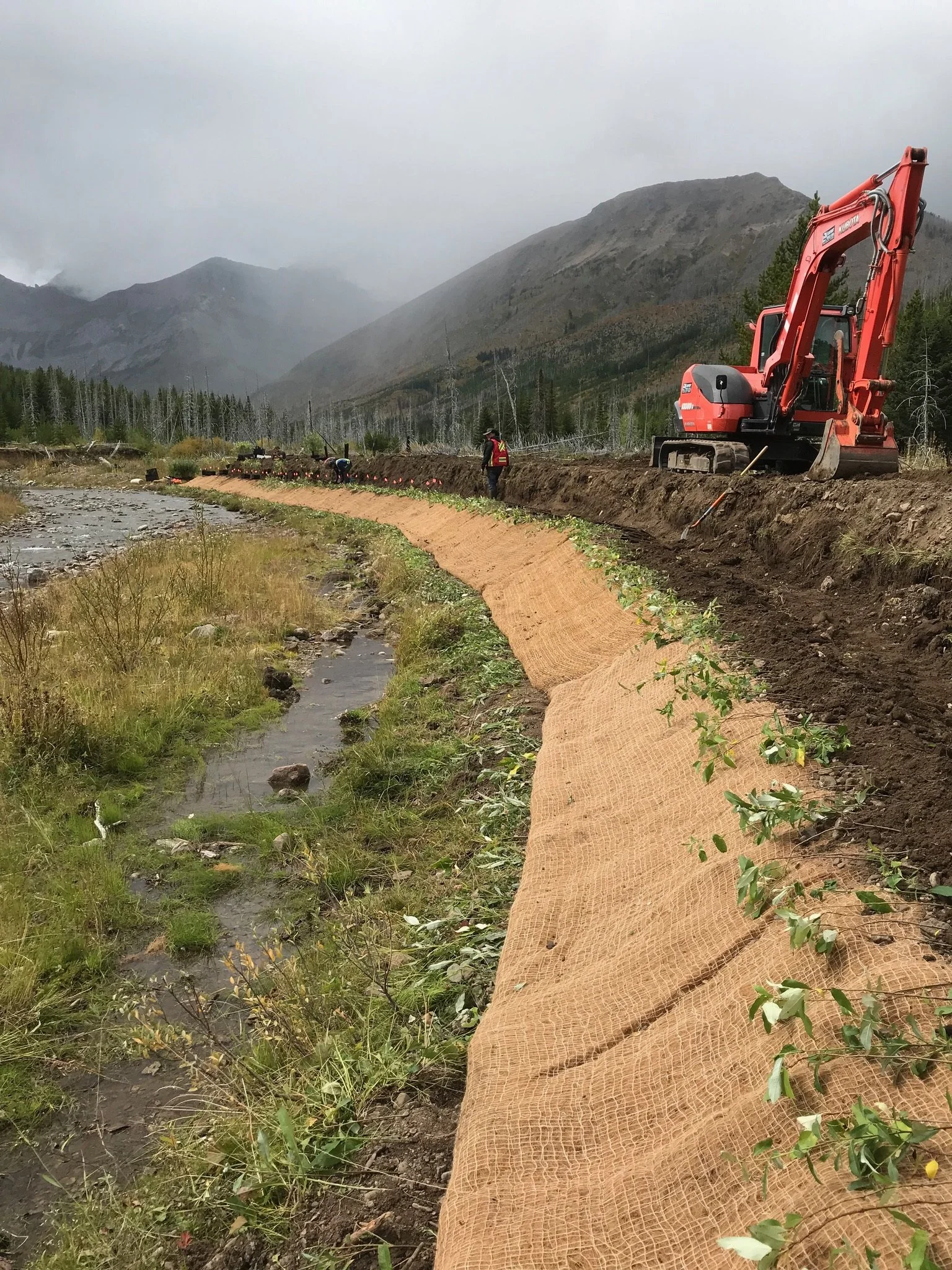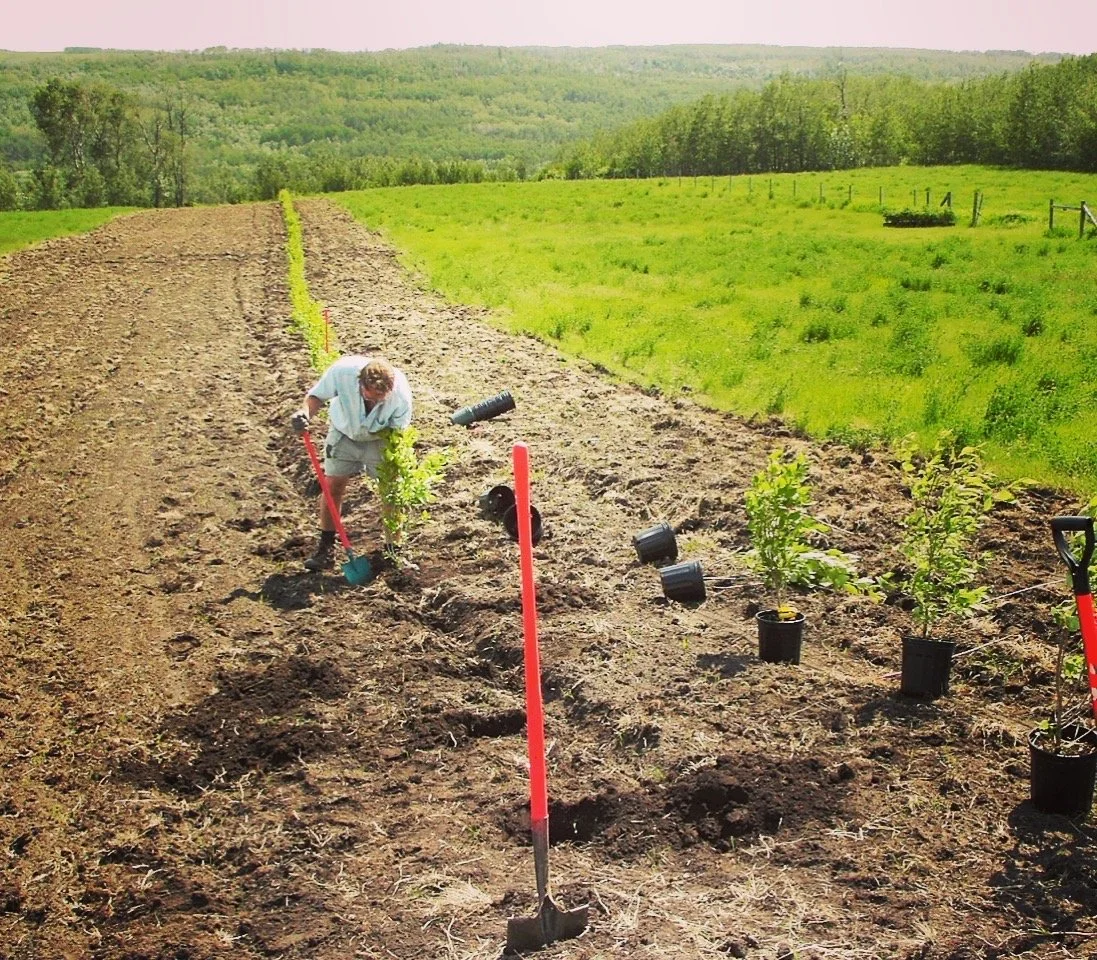Since 1984, our Nursery has
Grown and delivered over 30 million local native plants in Western Canada

High-Quality Native Plants for Every Project
At Plant It Forward, we specialize in providing native plants that support habitat restoration, reforestation, and ecological enhancement. Our selection focuses on species well-suited to Alberta's prairie region, ensuring optimal growth and ecological benefits.
Planting Services
We provide expert planting services to ensure the successful establishment of your native plants:
Site Preparation
Preparing the soil and site conditions for optimal growth.
Planting
Professional planting techniques to ensure proper installation and spacing.
Post-Planting Care
Ongoing support including watering schedules, mulching, and maintenance.
Reclamation Services
Oil & Gas Pipeline Reclamation
We offer specialized reclamation services for areas affected by oil and gas activities:
Site Assessment: Evaluating disturbance and selecting appropriate reclamation techniques.
Soil Health Restoration: Addressing soil compaction, contamination, and nutrient deficiencies.
Plant Selection and Installation: Using native species to ensure effective revegetation and stabilization.
Erosion Control: Implementing measures such as live stakes and erosion control blankets.
Ongoing Monitoring: Ensuring successful recovery and regulatory compliance.
Construction Site Reclamation
Our services for construction sites include:
Site Preparation: Clearing debris, grading, and preparing the soil.
Native Planting: Selecting and planting native species for optimal recovery.
Erosion Control: Using techniques like coir logs and live fascines to prevent soil erosion.
Soil Enhancement: Amending soil to improve fertility and support plant growth.
Long-Term Care: Providing maintenance services to ensure successful plant establishment.
Shelterbelt Services
Our shelterbelt services help protect crops, enhance biodiversity, and improve soil health:
Design and Planning
Custom shelterbelt design based on site conditions and needs.
Plant Selection
Recommending suitable plants for your shelterbelt.
Installation
Professional planting and installation.
Maintenance
Ongoing care including pruning and pest management.
Top Native Plants for Ecological Purposes
-
Examples: Yellow Willow (Salix lutea), Sandbar Willow (Salix exigua), Bebb's Willow (Salix bebbiana)
Rating: High
Description: Fast-growing shrubs or small trees ideal for riparian zones. Known for rapid carbon sequestration, excellent erosion control, and habitat creation. Yellow Willow thrives along watercourses, providing significant ecological benefits in soil stabilization and wildlife habitat.
-
Rating: High
Description: A fast-growing deciduous tree widespread across Alberta. It offers high carbon sequestration and habitat for various wildlife species. Aspens are pioneer species that promote forest regeneration and stabilize soil.
-
Rating: High
Description: Tall deciduous tree often found in riparian areas. It has rapid growth and high carbon sequestration, contributing to erosion control and providing critical habitat for birds and other wildlife.
-
Rating: High
Description: Native conifer with significant carbon storage capacity. White Spruce is versatile for reforestation and afforestation, providing habitat and cover for wildlife and stabilizing soils in various conditions.
-
Rating: Moderate to High
Description: Slow-growing conifer adapted to wet, cold, and organic soils. It has good carbon sequestration potential and is essential in boreal forests for biodiversity and soil stability in wetland areas.
-
Rating: Moderate to High
Description: Fast-growing deciduous shrub thriving in wet, riparian zones. Effective in stabilizing streambanks and controlling erosion, it also provides valuable habitat restoration.
-
Rating: Moderate
Description: Native conifer suited to sandy, well-drained soils and drought-prone areas. It has a moderate carbon sequestration rate and is used in reforestation, providing habitat for species like the Kirtland's Warbler.
-
Rating: Moderate
Description: Versatile conifer native to Alberta’s foothills and montane regions. It grows quickly and is used in reforestation, providing moderate carbon storage and wildlife habitat.
-
Rating: Moderate
Description: Deciduous conifer that grows in wet, boggy areas. It contributes to soil stabilization in wetlands with moderate carbon sequestration and provides habitat for various species.
-
Rating: High
Description: Fast-growing hybrid with excellent windbreak and erosion control capabilities. Often used in commercial and large-scale shelterbelt projects.
-
Rating: Moderate
Description: Provides dense canopy and effective windbreak. Not as cold-hardy as native species but useful in sheltered locations.
-
Rating: Moderate
Description: Fast-growing deciduous tree with good windbreak properties. It requires more water and space but offers substantial cover.
-
Rating: Moderate
Description: Non-native conifer with dense foliage, effective for windbreaks and providing wildlife habitat. Requires specific soil and moisture conditions.
-
Rating: Moderate
Description: Small tree or large shrub, good for providing quick cover and windbreak. Adaptable but not as durable as native species.
Non-Native Species
-
Rating: Moderate
Description: Hardy, drought-tolerant shrub with silver foliage. Effective for erosion control and soil stabilization in sandy or disturbed sites, and improves soil fertility by fixing nitrogen.
-
Rating: Low to Moderate
Description: Deciduous shrub producing edible berries. Valuable for habitat restoration with moderate carbon sequestration, used in shelterbelts and riparian plantings.
-
Rating: Moderate
Description: Nitrogen-fixing shrub thriving in dry, poor soils. Helps stabilize soils and is valuable for erosion control, providing habitat and food for wildlife.
-
Rating: Low to Moderate
Description: Small, fast-growing tree or shrub providing food and habitat for birds. Used in shelterbelts and riparian plantings with moderate erosion control properties.
-
Rating: Low to Moderate
Description: Deciduous tree native to moist, well-drained soils. Provides habitat for wildlife and helps stabilize soils in riparian areas with moderate carbon uptake.
-
Rating: Moderate
Description: Nitrogen-fixing shrub or small tree that improves soil quality. Valuable in riparian and disturbed areas for soil stabilization and wildlife habitat.
-
Rating: Low
Description: Slow-growing evergreen shrub with lower carbon sequestration potential. Provides soil stabilization and shelter for birds and wildlife in poor, rocky soils.
-
Rating: Low
Description: Fast-growing native tree found in open or disturbed areas. Provides wildlife habitat and aids in forest regeneration with lower carbon sequestration.
-
Rating: Low
Description: Low-growing shrub providing food for wildlife and contributing to understory diversity. Stabilizes soils and provides ground cover with lower carbon sequestration potential.
Summary
High-Rating Plants
Native species such as Trembling Aspen, White Spruce, and non-native Hybrid Poplar offer rapid establishment and effective wind protection. These are excellent for shelterbelt projects due to their growth rates and ecological functions.Moderate-Rating Plants
Species like Lodgepole Pine, Black Spruce, and non-native Black Walnut provide valuable shelterbelt functions but may have specific requirements or slower growth compared to high-rated options.
Including both native and non-native species provides flexibility in designing effective shelterbelts tailored to various conditions and goals.

Enhance your project with high-quality native plants and expert reclamation services?
Contact us today to discuss your plant supply, reclamation, and shelterbelt needs. Discover how Plant It Forward Inc. can support your ecological and restoration goals.





